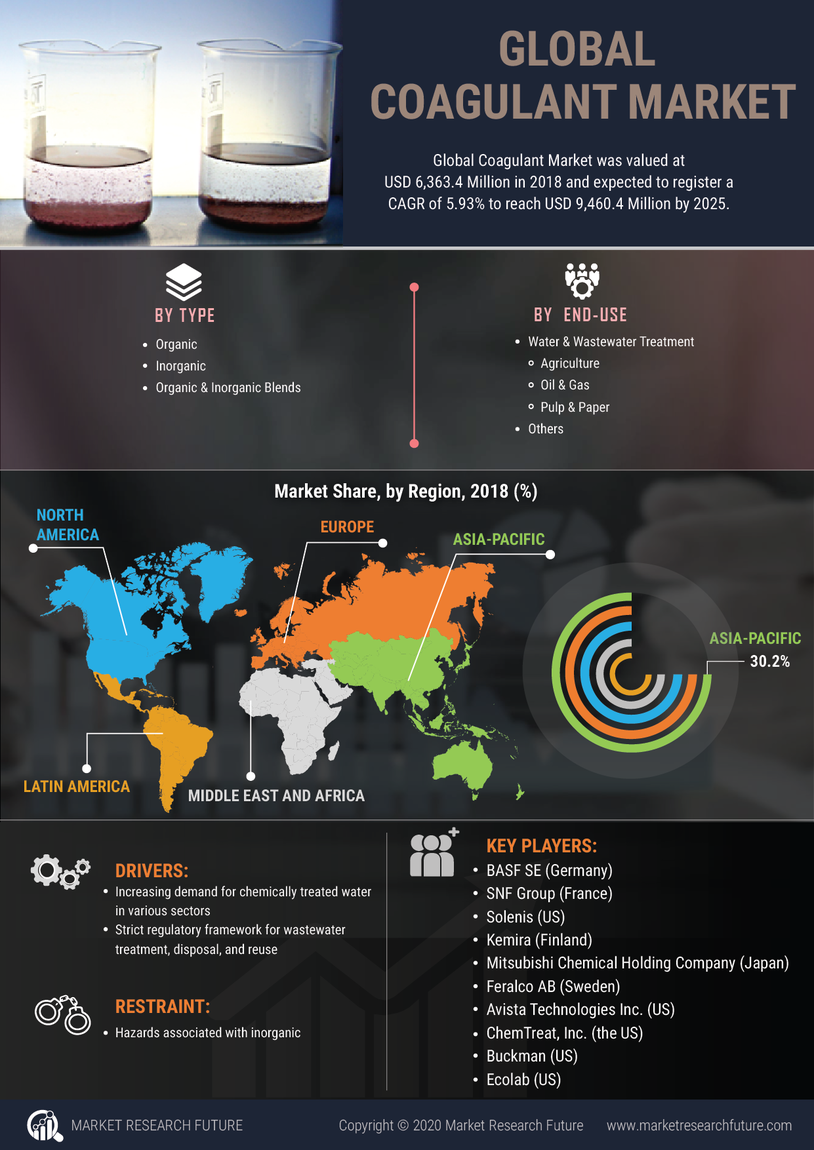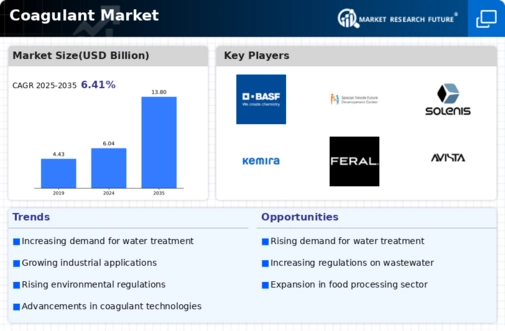Rising Industrial Applications
The Global Coagulant Market Industry is witnessing a surge in demand from various industrial sectors, including food and beverage, pharmaceuticals, and paper manufacturing. These industries require effective coagulants to ensure product quality and compliance with health standards. The increasing focus on process optimization and waste reduction is driving the adoption of coagulants in these sectors. As industries expand and evolve, the need for reliable coagulants is expected to grow, contributing to the overall market expansion. This trend underscores the versatility of coagulants in meeting diverse industrial needs, further solidifying their market presence.
Increasing Water Treatment Needs
The Global Coagulant Market Industry is experiencing growth driven by the rising demand for water treatment solutions. As urbanization accelerates, the need for clean water becomes paramount. In 2024, the market is valued at approximately 6.04 USD Billion, reflecting the urgency for effective coagulants in municipal and industrial water treatment processes. Governments worldwide are investing in infrastructure to enhance water quality, which further propels the demand for coagulants. This trend is expected to continue, as the global population increases and water scarcity issues become more pressing, thereby solidifying the coagulant's role in ensuring safe drinking water.
Growing Awareness of Water Quality Issues
The Global Coagulant Market Industry is benefiting from heightened awareness regarding water quality and its implications for health and the environment. Public concern over contaminants in drinking water has led to increased scrutiny of water treatment processes. As consumers demand higher quality standards, municipalities and industries are compelled to invest in effective coagulants to ensure compliance and public safety. This growing awareness is likely to drive market growth, as stakeholders recognize the importance of coagulants in achieving safe and clean water. The trend indicates a proactive approach to water management, which is essential for sustainable development.
Regulatory Compliance and Environmental Standards
The Global Coagulant Market Industry is significantly influenced by stringent regulatory frameworks aimed at improving water quality and environmental protection. Governments are enforcing regulations that mandate the use of effective coagulants in various applications, including wastewater treatment. This regulatory push not only ensures compliance but also enhances public health outcomes. As industries strive to meet these standards, the demand for coagulants is likely to rise. The anticipated growth trajectory suggests that the market could reach 13.8 USD Billion by 2035, driven by the need for compliance with evolving environmental regulations.
Technological Advancements in Coagulation Processes
Innovations in coagulation technologies are reshaping the Global Coagulant Market Industry. Advances in chemical formulations and application techniques are enhancing the efficiency of coagulants in various sectors, including municipal water treatment and industrial processes. These technological improvements not only optimize performance but also reduce costs, making coagulants more accessible to a broader range of applications. As a result, the market is poised for growth, with a projected CAGR of 7.78% from 2025 to 2035. This trend indicates a shift towards more sustainable and efficient coagulation methods, aligning with global sustainability goals.





















Leave a Comment